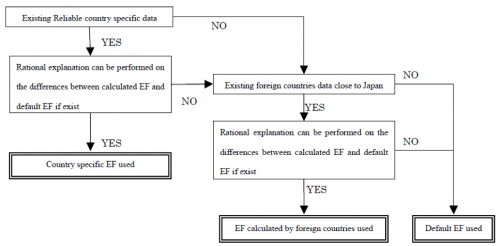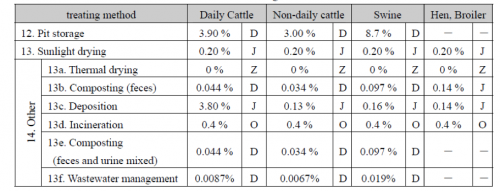Keywords: Decision tool | manure management
What data needs were addressed? Choice of emission factor for methane manure management emissions.
Why was the data needed? Japan has a considerable body of data from direct measurements of manure management methane emissions, and early inventories used these measurement results. In order to improve the reliability of the inventory, in NIR 2006 a decision tree was applied to guide the choice of data for emission factors.
Methods used: decision tree
How was the data need addressed? The 2006 IPCC Guidelines note that while using direct measurements of emissions to parameterize models for estimation of emission factors may be a good approach, measurements are difficult to conduct, and require significant resources and expertise, and equipment that may not be available. Direct measurements are not required for good practice as defined by the IPCC. Hence, Tier 1 and Tier 2 approaches are proposed as alternatives. Japan has a considerable body of data from direct measurements. However, not all the measured results were similar to IPCC default values. Therefore, a decision-tree was developed to guide the selection of emission factors (EFs) for manure management emissions (Figure 1).

Figure 1: Decision-tree for guiding the selection of EFs for manure management emissions in Japan.
Source: NIR 2018
As a result of applying the decision tree, a mixture of IPCC default values, country-specific values and values based on research in other countries is used (Table 1). By continually applying the decision tree to research results newly available in each year, Japan has gradually replaced some EFs with country-specific values, but continues to use default values where better estimates are unavailable.
Table 1: Manure management methane emission factors for cattle, pigs and poultry in Japan’s national inventory

Note: D = IPCC default; J = Japan; O = other countries; Z = not applicable.
Source: NIR 2006
Author: Andreas Wilkes, Values for development Ltd (2019)

